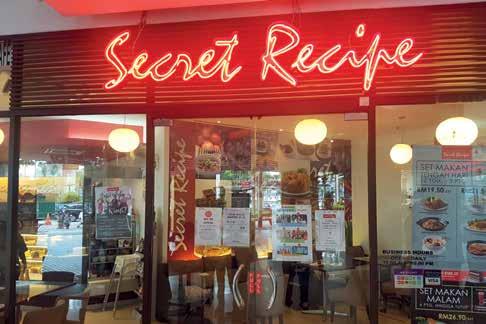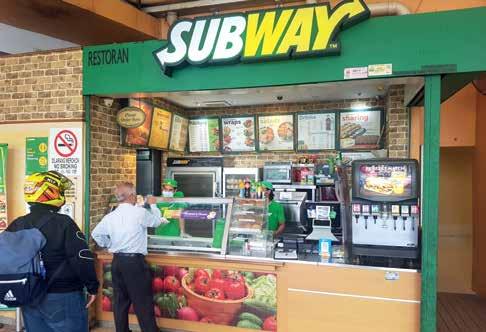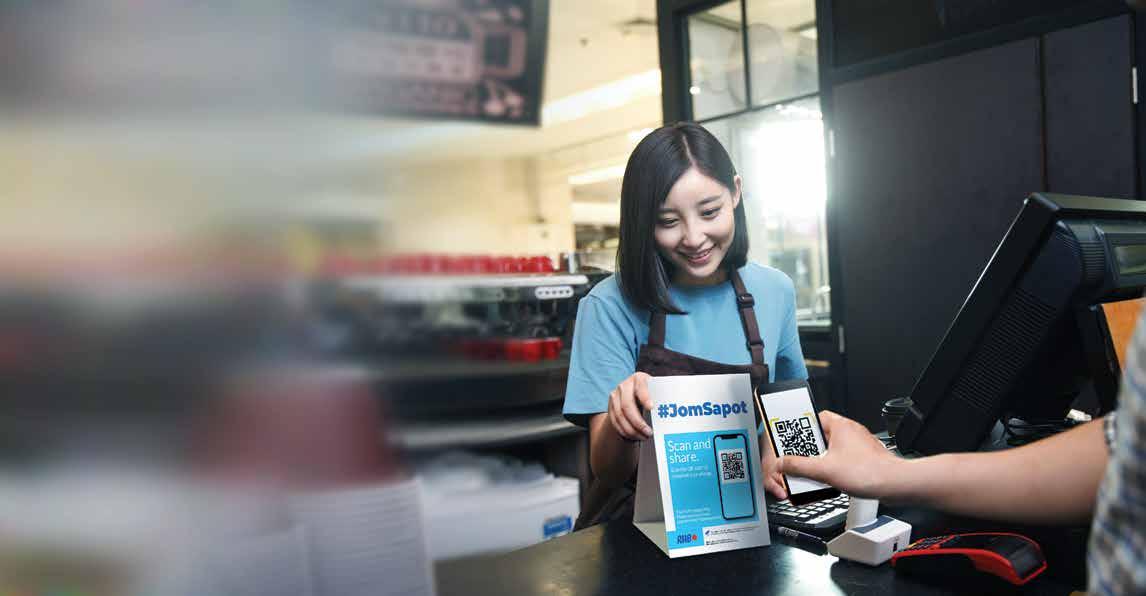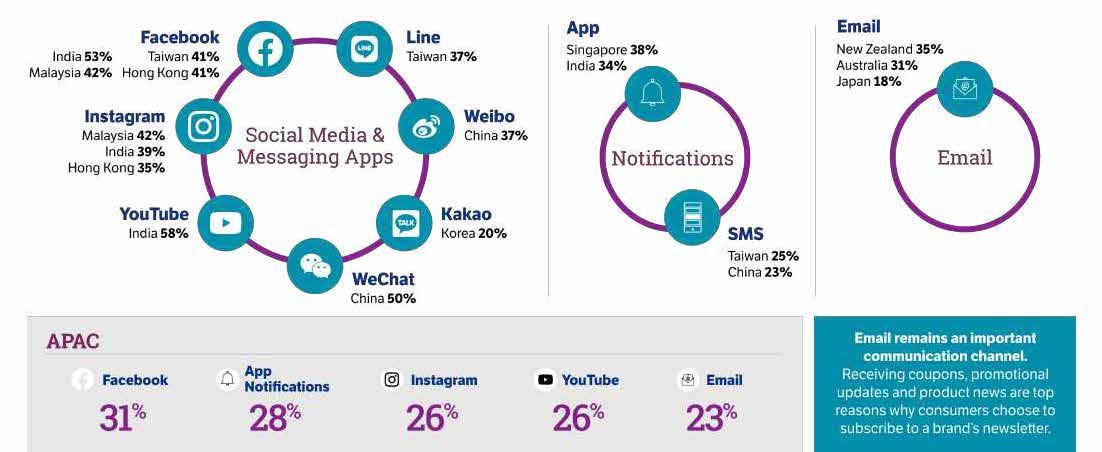
12 minute read
MRCA Youth Division
has 27 members. He also added that the Southern Chapter will work towards achieving MRCA President Shirley Tay’s six objectives. MRCA monthly meetings will be hosted at the Marrybrown head office via livestream. The Southern Chapter also works closely with local associations such as the Johor Chinese and Malay Chambers, Bossclub, JCI, PUMM, charity organisations and government regional offices.
The MRCA Southern Chapter is also exploring ways to reach out to poor families or homes in need of food supply as well as provide job opportunities. Early this year, MRCA Southern Chapter organised a Business Talk which attracted 292 attendees
MRCA SOUTHERN CHAPTER 2020-2022 Title Name
Division Chief Michael Liew Deputy Wesley Tan Secretary Alisa Lamlertkittikul Treasurer Soo Hui, Tan Committee Bruce Ban Committee Jarvin Leow Committee David Teo
Brand
Marrybrown Sdn Bhd Aqina Farm Sedap Corner Sdn Bhd Tea Garden Arashi Shabu-shabu Taang Shifu 2N Shop
and during the MCO in April, it held a webinar via Zoom which featured three women entrepreneurs who stared their stories on how they kept their SME Entrepreneurship in the New Normal and Covid-19 Transformation Opportunity for Retail, were held in June and August respectively, in Chinese, via Zoom.
ince the initiation of its
SYouth Division in 2015 by Past President Dato’ Liaw Choon Liang, MRCA has been nurturing its youth members to inherit the entrepreneurial spirit of the association through education, advocacy and communication.
As the Division enters its fourth term for the year 2020-2022, it is now led by Alex Chong, founder of MBA Crew Sdn Bhd, who runs and operates a successful chain of restaurants of various brands.
The Division envisages assisting and helping fellow youth retailers who have been impacted by the Covid-19 economic upheaval currently experienced globally.
The Youth Council members who are capable business leaders in their own respective industry, will assist through the sharing of updated information and exchange and share knowledge with the members.
Over the years, the Youth Division has also organised various events, workshops and networking sessions, among others, to equip its members with more skills and knowledge to start, manage and expand their retail businesses. “MRCA Youth will be there to help with start-ups, as well as assist them to weather the current economic upheaval,” said Youth Chief, Alex Chong. businesses afloat. Two other events,
MRCA YOUTH COUNCIL MEMBERS 2020-2022 Position Name Company
Youth Chief Alex Chong MBA Crew Sdn Bhd Deputy Chief Joyce Ooi Neubodi Holdings Sdn Bhd Secretary Terry Tay OSIM (M) Sdn Bhd Head of Events Gillian Ooi D’ Touch International Sdn Bhd Head of Membership Steven Pui Supersave Multi Trading Sdn Bhd Treasurer Calvin Lim Myszm Sdn Bhd Assistant Treasurer Ryan Liang Big Onion Food Caterer Sdn Bhd Council Members Michael Woon One AP Advertising Sdn Bhd Daphne Tan Multicom Grand Sdn Bhd Teh Souki CT F&B Holdings Sdn Bhd Nellie Tan App Lab Sdn Bhd Violet Lee AppPay Sdn Bhd Gabby Wong KTIC Marketing Sdn Bhd Jameson Yap S&J Co. Lim Ben Jie Tune Group Sdn Bhd Kok Wai Hien SS Productions & Marketing Sdn Bhd
MRCA’s New F& B Chapter
Datuk Seri Garry Chua who heads the newly-created F&B Chapter, will deal with related issues and provide a more conducive environment of opportunities.
Tell us about the current situation in the F&B sector in Malaysia
The F&B businesses in the suburbs show great promise of recovery. Footfall has gone up to 75% of pre-MCO levels, maybe 80% for some. As for sales, which generally depends on concept, the median’s probably around 60-65%, although it could be 7080% for some others.
However, F&B businesses in city malls could have possibly recovered to only 50-60%. This is due to the lack of tourists, offices operating at lower capacities than before and social distancing measures which have affected seating. Surprisingly, up-market restaurants catering to the top 20 bracket seemed to have performed better. Take the Grand Imperial, Oriental Group restaurants, etc, for example – they’ve been doing quite well.
When do you think the situation will be normalised?
Compared to the earlier Covid-19 days, F&B businesses have been experiencing good improvements in the last two to three months. We hope this trend will last towards the end of the year where volumes could be buoyed by the peak season.
Another positive news F&B businesses can look forward to is that, starting from September 2020, the Malaysian government is officially reopening borders for a start from Singapore essential sectors, etc.
We can expect to return to normalcy probably by the second quarter of 2021 provided there’s no second wave.
How did this idea of starting an F&B Chapter come about?
The idea started and was suggested to the Council quite some time ago. However, it wasn’t until the nation faced the Covid-19 pandemic that we started receiving a lot of support from members for an F&B Chapter.

Until that time, I’ve always reasoned with the Council that if we aren’t proactive about establishing this chapter, other groups and associations are going to do it, resulting in diluted representation. For the Chapter to be effective, it has to have many members and be inclusive.
Secondly, F&B will make up an estimated 50% of mall tenants in the future. Whether it’s fast food or finedining establishments, going by the number of outlets opening every month, F&B is arguably the fastest growing sector in retail. Leading the proliferation of new outlets are mid-tier restaurants which seem to be springing up faster than fine-dining concepts.
How is this Chapter going to help MRCA and its members?
Overall, the F&B has a diluted representation for MRCA in the retail fraternity. About 17% of its members are F&B players. Based on the composition of business establishments in Malaysia by sector, food service activities are the most popular category of trade in the country. Optimistically, MRCA can easily double F&B representation to onethird, or 30%.
In fact, the enlisting process has been proceeding smoothly over the last few months before my term as MRCA President was up. We have been submitting names for membership regularly. Most of the new applicants are from the F&B sector.
In what ways can the Chapter help its members?
There are many problems and issues in the F&B sector that must be ironed out –staffing, suppliers, bankers, retail locations, rates, investors, franchising opportunities, e-wallet charges, overseas exhibition, etc. As a Chapter, members benefit from collective bargaining power. From my observation many in the F&B landscape these days are grouping up to expand.
It is common for F&B businesses to have several partners because participating in this industry basically requires a hefty, upfront cash investment. A small outlet will cost RM500,000 to set up. Larger outlets on the other hand will cost RM1 million or so.
That said, this is an industry at the forefront of current and future retail. It is foreseeable that F&B will definitely be playing a very prominent role in the future of MRCA.
What percentage of retail in malls in Malaysia is F&B?
In malls, F&B’s presence is close to 50%, a trend which has been going on in Singapore over the past few years.
In contrast to adjacent retail segments (fashion, for instance, has been very badly hit), F&B holds its own because people still need to eat, though on a more cautious scale.
What are your views on the mobile food delivery marketplace, and the future of F&B?
For most F&B businesses, sales via mobile ordering apps and online takeaways, even during the height of Covid-19 period, are 20% (as a percentage of total revenue), at the most. Of course, there are exceptions, e.g. burger brands and fast food companies would be doing much more.
If we were to sell our food online as opposed to serving dine-ins, diners hardly order any appetizer or drinks. The main course is basically the only attraction. Therefore, even with the same number of customers, it simply shows for a fact that value isn’t there.
Food delivery companies charge fees as high as 30-35% of the menu price, which skims away nearly all of the margins restaurants enjoy. You just can’t make more money from F&B in platforms like that. Hence, our newly-established F&B Chapter will start devoting resources to get a better share for our members.
Nevertheless, we should recognise platforms like these as a good, complementary, and supportive element to our offline operations. Online will grow to a much higher level to balance out the off-line dining as in China.
This mode of operating has also enabled people to aggressively move towards the “cloud kitchen” concept – centralised food production facilities where space can be rented to prepare and cater for on-demand deliveries. Because you can optimise the use of other’s kitchens, it’s a good way for people to start their own business, without having to spend a lot of capital.
What are the membership goals of this new Chapter?
Currently, MRCA has more than 100 F&B chain members.
Data from the Department of Statistics Malaysia indicates that there were 167,490 food and beverage establishments in 2015 in the country.
While it would be difficult to precisely estimate the number of unique F&B brands and establishments in the country (in view that many operate from a nearlyuncountable diaspora of single, small handful of shops) without reliable data from institutions like the Companies’ Commission of Malaysia (SSM), it is not impossible for MRCA to reach a target of 500 F&B chain members by the end of next year.



What F&B Players Can Do During RMCO to Keep Afloat
uring the MCO and RMCO most D of the cafes and restaurants, especially those in the shopping complexes, saw a drastic drop in sales. Sales dropped to about 80% and about 20% were depending on takeaways to sustain their business. Those who managed to stay afloat did so because they adopted a new breakthrough by leveraging digital technology. What we learned from the lockdown was that whatever strategy that worked before the pandemic may not work now and whatever strategy that did not work By Ray Wong, Business then may work in the current situation. Development Director, The business model, the strategy
Coffeeland Sdn Bhd. and approach as well as the promotion methods have all changed under the new normal. The new model or going digital, requires a new mindset and a new game plan. Many of the industry players are exploring and learning how this game can be played in a more effective manner. The F&B players can use social media such as FB Live, as one of the main tools in promoting their products and services. The idea is to draw customers by communicating directly with your target audience, engaging them, charming them, educating them and entertaining them in a way that has never been done before. By pressing the right button you hit the Jackpot, in fact, some cafes have been receiving overwhelming orders.
FB Live is definitely a MUST for Retail and F&B business to recoup their losses and more importantly, moving on and reaching to the new segment of customers who could not be reached or were not targeted before. The FB Live is a new approach that requires new skills, right content and has an element of “Edutrainer” (educating and entertaining).
The Covid-19 pandemic has also taught the industry players that in order to sustain they need to collaborate with other players or service providers. Promotions can be more effective if it is done in collaboration, for example, when customers order takeaways, throw in free delivery. Throw in more irresistible offers when customers purchase more (buy in advance approach).
Playing a solo game will not be wise as the industry is moving into the concept of “Resources Sharing”. Within this new collaboration, cloud kitchens, purpose-built spaces that function as shared cooking facilities, are introduced and have been successfully launched and implemented.
The new normal is all about new ways, new strategies, new approaches and new business models. It is about exploring what works and what doesn’t. Above all, you must be able to change, adapt fast and learn and re-learn. It is a new battle with new playing rules.

here is no doubt that T doing business in these economically trying times is a challenge. The key words to staying afloat in the F&B industry are cashflow, light assets, takeaways, outsource services where necessary and keep in mind the 4Ps – product, pricing, place and promotions.
Top of the list is cashflow. You need to have a cashflow projection for the next couple of months to give you a rough idea of the business’s financial health. The projections must include collections – customer collections, By Liang Foo Kuan, suppliers and other expenses as well. Managing Director, For those who have multiple outlets Big Onion Food or business units, it’s time to make Caterer Sdn Bhd. decisions to scale down, close or maintain operations, based on profitability.
Generally, the two biggest costs are rental and staffing. As such, you have to look into ways of keeping your overheads down in the best way possible. If you have to make the decision to let some of your staff go, do so by looking into their individual KPI instead of seniority.
Consider having an asset-light business where the company has relatively few capital assets compared to its operations. It is also important to talk to your banks to reschedule your loans or other financial commitments.
Look for Original Equipment Manufacturer (OEM) suppliers for food such as ready or partially ready food, paste or sauce. OEM can help to cut down on purchases or maintenance of equipment, kitchen staff and other hidden costs such as meals, accommodation, uniforms, medical and staff benefits, among others.
The 4Ps comprising product, pricing, promotion and place, also play a considerable part in whether you stay afloat or go under. Where product is concerned, you may want to redesign your menu as not all the items on the menu are suitable for takeaways. Simplify your menu. You need to take into your supply chain as well.
Look into your pricing which should depend on what it costs you to produce, market, and cover expenses including your delivery costs. Your pricing will also depend on your location or place (commercial, residential area, mall, etc.) you are operating from and who your customers are.
Redirect your marketing strategies.Make your brand present O2O, have physical (dining experience) & online presence. Work with people such as influencers and key opinion leaders who can easily reach out to more customers. Leverage on food-related platforms and food delivery platforms and have customer loyalty programmes to encourage repeated sales.










